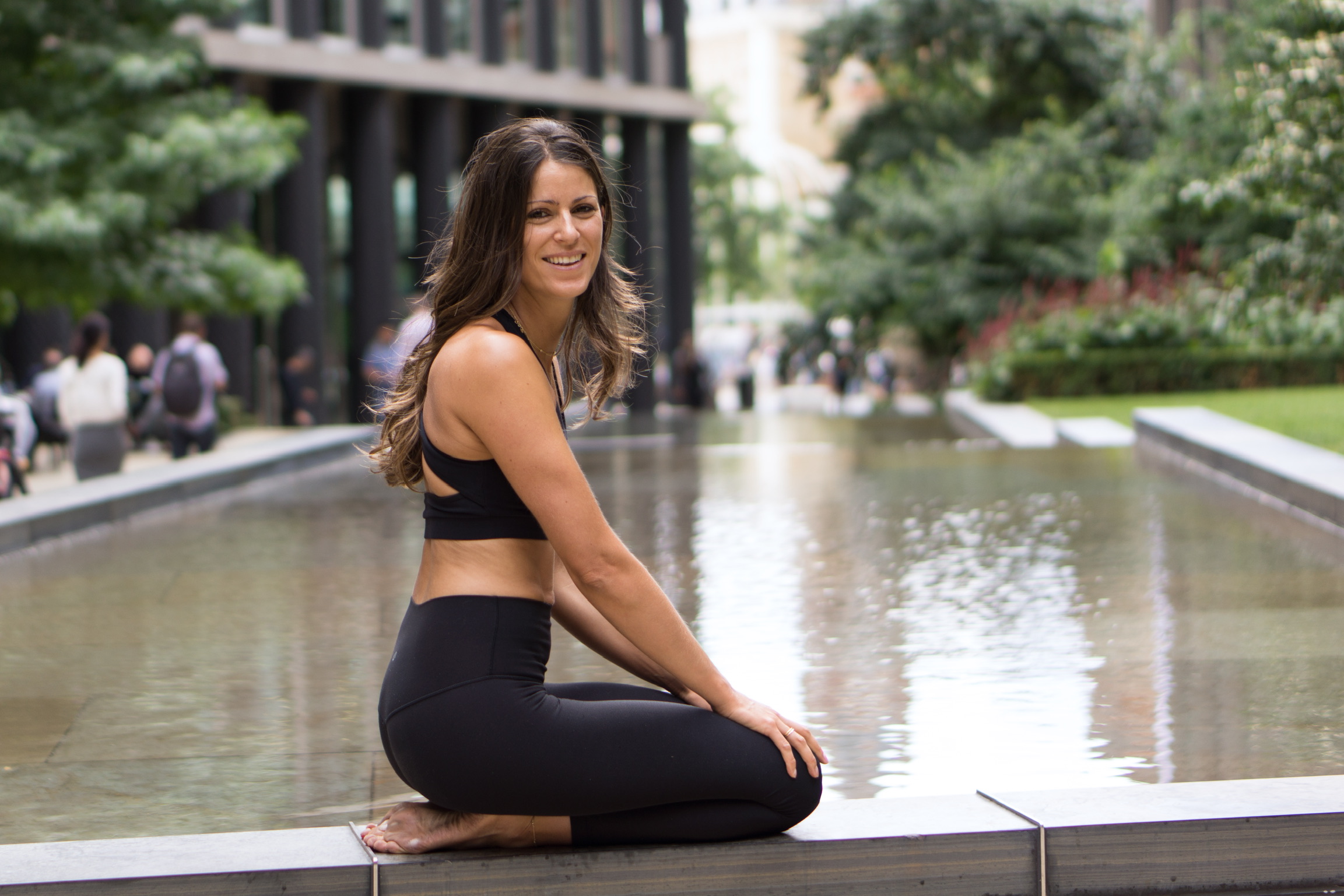Yoga Girl London's Guide To Pre + Postnatal Yoga
Finding the motivation to work out can be a challenge at the best of times, add in a pregnancy and couple of kids, and it can feel like you’re asking us to solve Brexit. . Which is why we have called in the helping hand of Hannah Barrett, ie Yoga Girl London.
Hannah Barret ie Yoga Girl London with her daughter.
With over 151K followers on Instagram, the yoga instructor and mum of 2, has been inspiring us with her amazing moves and inspirational posts. Speaking openly about her own struggle with postnatal depression and posttraumatic stress disorder following the birth of her second child, Hannah credits the physical practise of yoga along with specialised breathing techniques and meditation with helping her to cope and feel strong again in both body and mind.
Determined to share what she had learnt and help other mums to find their strength and develop their own self practice when they most need it, Hannah undertook Postnatal Yoga Teacher Training, becoming one of Londons leading yoga instructors.
Here Hannah shares her Yoga Girl London's Guide To Pre + Postnatal Yoga.
WHY CHOOSE PRE AND POSTNATAL YOGA?
Pregnancy yoga helps you create a healthy, happy pregnancy and a bond with your unborn baby. It can keep the body supple and toned, boost energy and relieve stress, provide pain relief in labour and relieve common pregnancy complaints like lower back pain.
Postnatal yoga similarly helps strengthen the body and mind for the new demands of motherhood, nature the bond with your new baby and can quicken postpartum recovery.
INVISIBLE YOGA
Pelvic floor muscles exercises are vital both before and after baby arrives. They help prevent issues including incontinence and prolapse and you can do them anywhere and no one will know!
Lie on your back with your knees bent.
Inhale to prepare.
Exhale engage your pelvic floor by imagining gently pulling up your front and back passages (as if trying to stop yourself passing urine and flatulence) without clenching your buttocks. You don’t want to feel a pushing down sensation. If this happens take a few breaths into the stomach and try again.
Continue to breathe normally while holding for five seconds.
Relax and repeat ten times, a few times a day and in different positions like sitting and standing.
THE KEY IS IN THE DEEP CORE
Focusing on strengthening your transverse abdominals is also key and can help improve a number of postpartum complaints like diastasis recti (a gap in the abdominal muscles), reduce the likelihood of low back pain and helps to flatten the stomach.
Lie on your back with your knees bent.
Inhale to prepare.
Exhale and pull in your stomach gently as though you are trying to put on a pair of jeans.
Hold for five seconds as you continue to breathe normally.
Repeat ten times, a few times a day.
MINDFUL MOVEMENT
During pregnancy your body goes through a lot of changes in order to grow your newborn safely. Hormones, including one called Relaxin, control these changes. In order to give birth your pelvic ligaments become more lax which can result in pain conditions including pelvic girdle pain (or SPD). It also means you need to take care when stretching as overstretching in this area can lead to long term issues. When stretching you want to make sure you feel a gentle stretching not pain or deep pulling.
The main way to avoid painful conditions like SPD is to strengthen the muscles around the pelvis including the gluteals, pelvic floor and transverse abdominals. Prenatal yoga classes can be a great way to strengthen these muscles and maintain joint mobility as your posture changes with your growing bump.
FINDING STRENGTH IN YOUR BREATH
Breath is the essence of yoga. Your breath has a huge effect on both the physical and emotional body. Studies have shown that breathing techniques can reduce stress, reduce pain, help depression and help improve sleep and overall wellbeing.
As you read this, start to slow your breath. Take the deepest breath you’ve taken today, feeling your belly rise, chest rise and even the collar bones lift slightly. Exhale and release. Take three or more minutes out of your day to sit, be still and breath and notice how it makes a change to how you feel.
FINDING TIME
It can be hard to stay motivated with a hectic lifestyle, and being a mum is a 24/7 job! The three things that help me are:
1. WALK WALK WALK - put your baby in a pushchair or a sling and walk whenever possible.
2. WORKOUT AT HOME - You 100% don't need a gym to be fit and strong. Our 16-week postnatal guide Strength Through Yoga is designed for use at home or anywhere there is space for a yoga mat. Working out at home means that your bubba can join in too!
3. PLAN YOUR DAY AHEAD - Set aside a specific time in the day to fit in exercise such as when your baby is sleeping. But don't worry if this doesn't go exactly to plan. Life happens in the form of sick babies and big messes that won't clean themselves. If you miss a day, don't worry about it, start again the next. Or if you do half your workout at one time in the day and have to finish the last 10 minutes later that day it's okay? And remember that even though exercise is great for boosting energy and mood, sometimes rest is best if you are exhausted
Hannah Barrett: Yoga Instructor, Author and Postnatal Health & Fitness Specialist. Strength Through Yoga is available for £39.99 at yogagirllondon.com

























